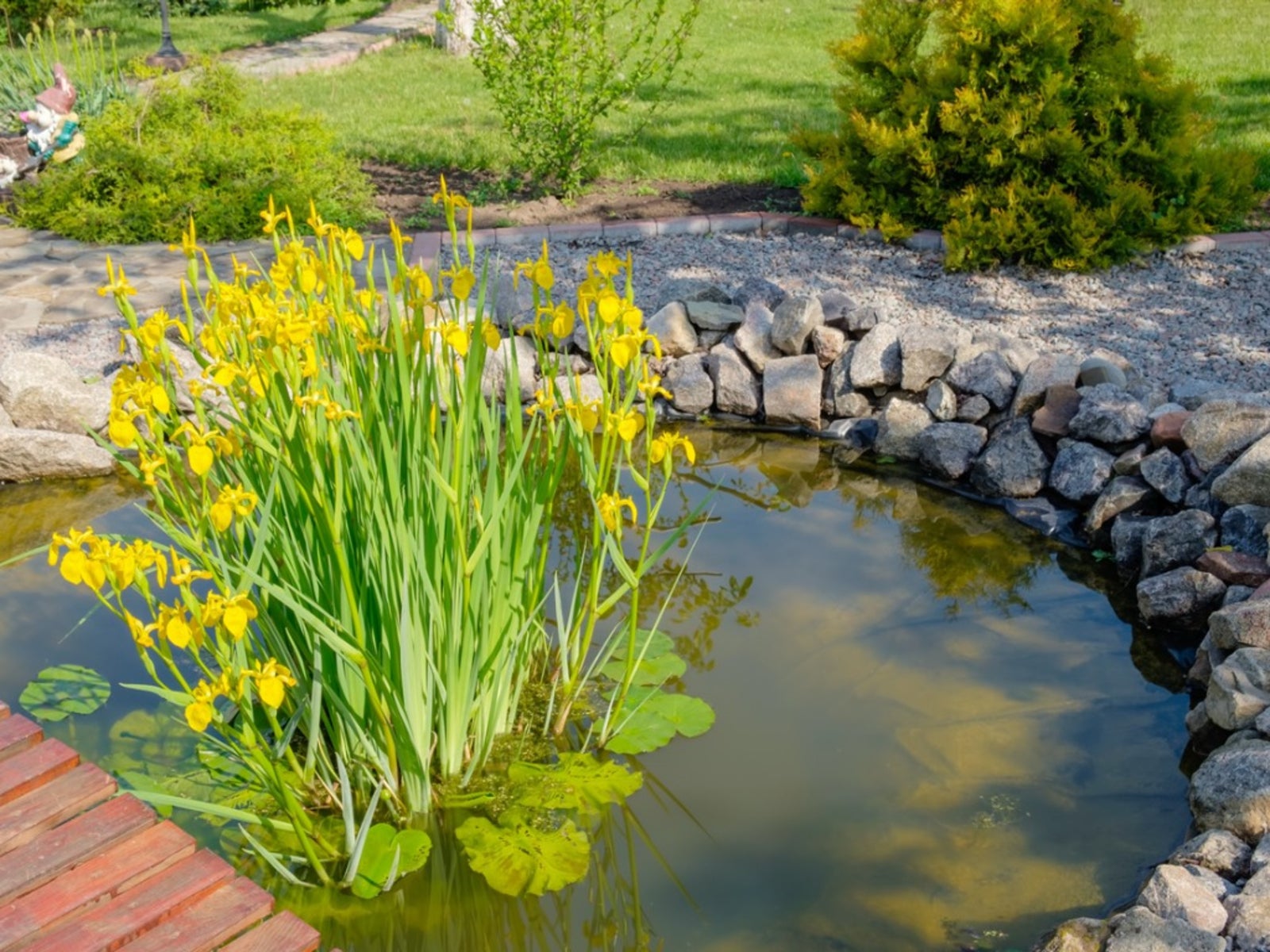DIY Floating Pond Island: Tips For Creating A Floating Wetland


Floating wetlands add beauty and interest to your pond while allowing you to grow a variety of wetland marsh plants. The plant roots grow down into the water, improving the water quality and providing habitat for wildlife. Once planted, these floating islands are much easier to care for than terrestrial gardens, and you'll never have to water them.
What are Floating Wetlands?
Floating wetlands are container gardens that float on the surface of the water. You can plant floating pond islands with any wetland marsh plants except trees and shrubs. They make a beautiful addition to any pond. As the plant roots grow beneath the island, they absorb excess nutrients from fertilizer runoff, animal wastes and other sources. Removing these nutrients from the water reduces the incidence of algae, fish kills and choking weeds. The water beneath a floating wetland is cool and shady, providing habitat for fish and other beneficial organisms.
Plants for Floating Islands
You can use a wide variety of plants for floating islands. Give first consideration to native marsh and wetland plants. Native plants are well-suited to the climate and will thrive in your pond with less maintenance than non-native plants. Here are some plant suggestions:
- Pickerelweed - Pickerelweed (Pontederia cordata) has heart-shaped leaves on stems that grow 2 to 4 feet tall. Blue flower spikes bloom at the top of the plant from spring until fall.
- Marsh hibiscus - Also called rose mallow (Hibiscus moscheutos), march hibiscus grows about a foot tall. The showy hibiscus flowers bloom from midsummer until fall.
- Narrow-leaved cattails - This variety (Typha angustifolia) has the same characteristic, velvety brown spikes but narrower leaves than that of common cattails. Geese and muskrats feed on the roots.
- Flag iris - Both yellow (Iris pseudacorus) and blue (I. versicolor) flag iris are lovely irises with thick, dark green leaves and showy flowers in spring.
- Bulrush - Dark green bulrush (Scirpus atrovirens) is a common sedge with showy seed heads atop 4 to 5-foot stems.
- Water arum - Water arum (Calla palustris) has heart-shaped leaves and large, white flowers. They give way to red and orange fruit later in the season.
Creating a Floating Wetland
Creating a floating wetland is easy using a floating plastic or foam matrix. You can buy these devices at a pond supply store or order them online. There are two basic types. One is a floating mat or container that holds organic matter for planting. The other is a series of special containers filled with plants. The containers fit into a floating grid. You can combine several grids to form a large surface area. You'll find many variations on these two themes.
Sign up for the Gardening Know How newsletter today and receive a free copy of our e-book "How to Grow Delicious Tomatoes".

Jackie Carroll has written over 500 articles for Gardening Know How on a wide range of topics.